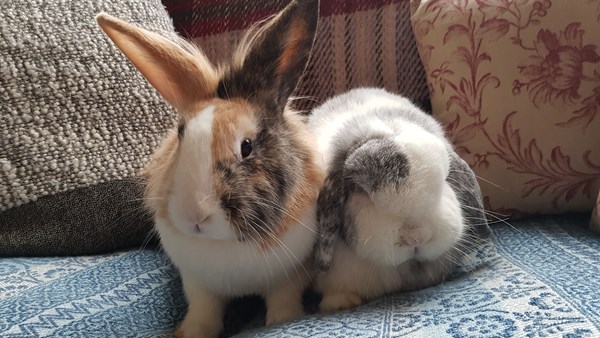
A popular myth about rabbit domestication involving the Pope and hungry seventh century monks is not founded on truth, research has shown.
According to the story, bunnies were first tamed in 600 AD by French monks whose Gallic love of food was at odds with the strict rules of observing Lent.
Pope Gregory is said to have come to their rescue by issuing an edict declaring that it was acceptable to eat laurices – unborn rabbits – as a meat substitute during the fast.
From then on, rabbits continued to have wildness bred out of them, both for the pot and to provide cute fluffy companions.
Now a new genetics study has shown that epicurean monks probably had little to do with the origins of the domestic bunny.
Scientists compared the genomes, or complete genetic codes, of modern domestic and wild rabbits to see how long it had taken them to diverge.
Using the known mutation rate of certain biomolecules as a “molecular clock” they found it was not possible to pin down rabbit domestication to a single date or event.
Instead, the creation of tame buns appeared to be a cumulative effect stretching back to Roman times and possibly the Stone Age.
Lead scientist Dr Greger Larson, of Oxford University, said: “The historical evidence credits the Romans with the earliest written records of rabbits and as being the first to use hutches.
“The archaeological evidence shows that rabbits were hunted during the Palaeolithic in the Iberian Peninsula and south-west France.
“By the Middle Ages rabbits were considered a high-status food and regularly transported across Europe, although it took more than 2,000 years for differences between wild and domestic rabbits to be visible in their bones.”
Previously the monks story had been widely accepted as fact by the scientific community, said the researchers, whose findings are reported in the journal Trends in Ecology & Evolution.
“I had cited it, colleagues of mine had cited it, it’s all over Wikipedia and the web, but it turns out that the modern story is a complete house of cards,” Dr Larson added. “What was really interesting to me then was why nobody’s really thought about it or been critical about it.”
The origins of many domestic animals made “great bed-time stories” but in reality were questionable myths, he pointed out.
